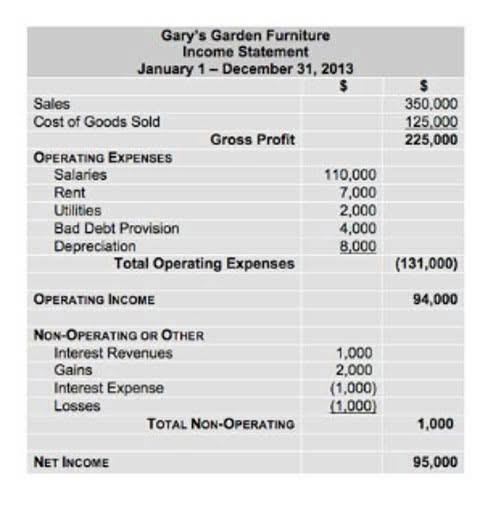
If you see your beginning retained earnings as negative, that could mean that the current accounting cycle you’re in has a larger net loss than your beginning balance of retained earnings. For example, if the dividends a company distributed were actually greater than retained earnings balance, it could make sense to see a negative balance. They instead reallocate a portion of the RE to common stock and additional paid-in capital accounts. Stocks per share do not decrease as a result of this allocation, but the overall size of the company’s balance sheet does. The retained earnings (or retention) ratio refers to the amount of earnings retained by the company compared to the amount paid to shareholders in dividends. It’s essentially a comparison between the money earmarked for reinvestment and the money paid to investors in dividend payments.

Formula For Retained Earnings
- These tips can help you turn Excel from a simple spreadsheet tool into a powerful data analysis assistant, saving you time and improving accuracy.
- Instead, they reallocate a portion of the RE to common stock and additional paid-in capital accounts.
- If the result is positive, it means the company has added to its retained earnings balance, while a negative result indicates a reduction in retained earnings.
- As retained earnings are recorded within shareholders’ equity, which links the income statement and the balance sheet, retained earnings act as a helpful link between the two.
- Some of the uses of this part of profit that is kept aside by the business is given below.
- However, it’s essential to remember that CAGR assumes the growth rate is constant throughout the period, which might not always be the case in real life.
If they are confident that this surplus income can be reinvested in the business, then it can create more value for the stockholders by generating higher returns. This money can partly be distributed as dividends to the stockholders, while also being reinvested for business growth. Management, on the other hand, will often prefers to reinvest bookkeeping and payroll services surplus earnings in the business.
- Every time your business makes a net profit, the retained earnings of your business increase, and a net loss leads to a decrease in the retained earnings of your business.
- At the end of the period, you can calculate your final Retained Earnings balance for the balance sheet by taking the beginning period, adding any net income or net loss, and subtracting any dividends.
- You can find these figures on Coca-Cola’s 10-K annual report listed on the sec.gov website.
- Also called earnings surplus, it represents the funds available to the company management for reinvestment.
- Lack of reinvestment and inefficient spending can be red flags for investors, too.That said, calculating your retained earnings is a vital part of recognizing issues like that so you can rectify them.
Setting Up Your Excel Spreadsheet

This is because reinvestment of surplus earnings in the profitable investment avenues means increased future earnings for the company, eventually leading to increased future dividends. It can reinvest this money into the business for expansion, operating expenses, research and development, acquisitions, launching new products, and more. The specific use of retained earnings depends on the company’s financial goals. Ultimately, the company’s management and board of directors decides how to use retained earnings. Retained earnings, on the other hand, specifically refer to the portion of a company’s profits that remain within ending re formula the business instead of being distributed to shareholders as dividends. Don’t forget to record the dividends you paid out during the accounting period.
Get Business Strategy

By now, you should feel confident in setting up your spreadsheet and using formulas to project investment growth. Remember, practice makes perfect, so don’t hesitate to try different scenarios and see how they affect your end values. Before we jump into Excel, let’s take a moment to understand what CAGR actually means.
- Lower retained earnings can indicate that a company is more mature, and has limited opportunities for further growth, but this isn’t necessarily a negative.
- Dividends decrease the amount of retained earnings because they represent a distribution of profits to shareholders.
- They play a critical role in funding growth initiatives, research and development, and improving financial stability by paying down debt.
- The dividends payment causes cash to decrease with a corresponding decrease to the earnings (equity).
- Do the Calculation of the Retained Earnings using the given financial statements.
Why Are Retained Earnings Important?
We can find the dividends paid to shareholders in the financing section of the company’s statement of cash flows. Overall, Coca-Cola’s positive growth in retained earnings despite a sizeable distribution in dividends suggests that the company has a healthy income-generating business model. The growing retained earnings balance over the past few years could suggest that the company is preparing to use those funds to invest in new business projects.

As you can see there is a heavy focus on financial modeling, finance, Excel, business valuation, budgeting/forecasting, PowerPoint presentations, accounting and business strategy. Examples of these items include sales revenue, cost of goods sold, depreciation, and other operating expenses. Understanding how to calculate end values using CAGR is not just an academic exercise—it has real-world applications.
The AI Spreadsheet We’ve All Been Waiting For
- This reinvestment into the company aims to achieve even more earnings in the future.
- Earnings retained by a company over time are referred to as retained earnings, and are based on net (as opposed to gross) income.
- It’s easy to understand the math if you think about what retained earnings actually are—the earnings that a company has kept (retained) over time instead of paying it out to shareholders.
- If the company had a market value of $2 million before the stock dividend declaration, it’s market value still is $2 million after the stock dividend is declared.
- The schedule uses a corkscrew-type calculation, where the current period opening balance is equal to the prior period closing balance.
- Retained earnings are calculated by subtracting dividends from the sum total of the retained earnings balance at the beginning of an accounting period and the net profit or loss from that accounting period.
It’s good to be familiar with different methods as it can make you more versatile in Excel—a handy skill whether you’re working on finance, data analysis, or any number of fields. Experience the power of artificial intelligence in data handling with retained earnings Sourcetable. You can experiment with calculations on AI-generated data, streamlining your analytical processes. Calculating retained earnings enables businesses to fund expansion activities. This is crucial for scaling operations and entering new markets without obtaining external financing. Sourcetable is an AI-powered spreadsheet that seamlessly integrates an AI assistant capable of executing complex calculations on demand.

